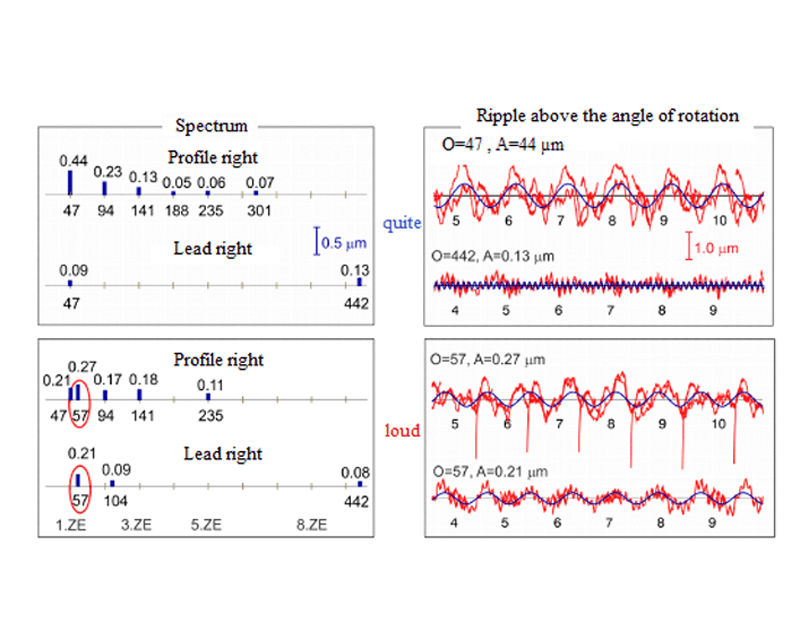
Deviation analysis for cylindrical gears
Software
Tooth flank waviness and its causes
Low noise levels in the interior are an important quality criterion for passenger cars. As engines become increasingly quiet, and in particular as the use of electric drives becomes more widespread, noise caused by transmissions is now the subject of greater focus. Today, evaluation methods are available that make it possible to analyze tooth flank waviness reliably and reproducibly and to compare it against tolerance specifications. If noise-causing waves can be identified on the gear surface, the next step is to identify the causes giving rise to such waviness so that it can be eliminated.
Further information can be found in our brochure.



